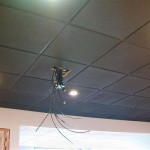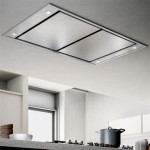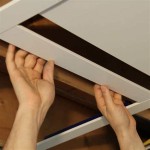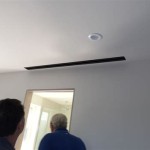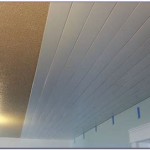What Is a Vaulted Ceiling in House Design?
Vaulted ceilings are a popular architectural feature that adds height, grandeur, and a sense of spaciousness to a room. They involve constructing a ceiling that rises from the walls in a curved or angled shape, creating a dramatic and aesthetically pleasing effect. This type of ceiling design has been used for centuries, dating back to ancient times, and continues to be a sought-after element in modern homes.
Vaulted ceilings are particularly well-suited for spaces where the homeowner desires a more prominent and luxurious feel. They can enhance the natural light within a room due to their upwards pitch, making the space feel brighter and more airy. Additionally, the unique shape can contribute to improved acoustics, as sound waves can travel more effectively within the vaulted space, creating a more balanced and immersive auditory experience.
Types of Vaulted Ceilings
There are several different types of vaulted ceilings, each with its own distinct characteristics and visual appeal. Common types include:
Barrel Vaults
Barrel vaults are a simple and classic type of vaulted ceiling that resembles a half-cylinder. They are typically used in long, narrow spaces like hallways or corridors, creating a sense of continuity and flow. They can also be used in larger rooms, such as living rooms or dining rooms, to add height and depth.
Groin Vaults
Groin vaults are formed by the intersection of two barrel vaults at a right angle. This creates a cruciform shape, often seen in churches and cathedrals, offering a more intricate and elaborate design than a simple barrel vault. They can also be used in residential settings to add a touch of architectural grandeur.
Gothic Vaults
Gothic vaults are characterized by pointed arches and ribs that extend from the base of the vault to the keystone at the apex. They have a distinctive upward thrust and a sense of soaring height, often found in churches and other medieval buildings. These vaults create a dramatic and impactful visual experience.
Rib Vaults
Rib vaults are similar to Gothic vaults but with the addition of ribs that run along the intersection of the vaulting surfaces. This creates a more intricate and decorative design that provides structural support and enhances the visual appeal. Rib vaults are commonly found in cathedrals and other monumental structures.
Advantages of Vaulted Ceilings
Vaulted ceilings offer numerous advantages in residential design, enhancing the overall aesthetic and functional aspects of a space. Some key benefits include:
Increased Space and Height
One of the primary advantages of vaulted ceilings is the illusion of increased space and height. The upwardly sloping shape creates a sense of openness and grandeur, making the room feel larger and more dramatic. This is particularly beneficial in smaller rooms or spaces with low ceilings, where it can significantly improve the overall feeling of spaciousness.
Enhanced Natural Light
The angled shape of vaulted ceilings allows more natural light to penetrate the space, making it feel brighter and more inviting. This is because the angled surfaces reflect and distribute light more effectively than a flat ceiling. Vaulted ceilings are particularly beneficial in rooms with limited natural light, where they can significantly improve the overall brightness and ambience.
Improved Acoustics
Vaulted ceilings can improve the acoustics of a room by reflecting sound waves more effectively than a flat ceiling. This can create a more balanced and immersive auditory experience, making it ideal for music rooms, home theaters, or areas where good acoustics are important.
Aesthetic Appeal
Vaulted ceilings are a highly sought-after architectural feature that adds a touch of elegance and sophistication to any space. Their unique shape creates a dramatic and eye-catching focal point, making the room feel more luxurious and distinctive.
Disadvantages of Vaulted Ceilings
While vaulted ceilings offer many benefits, they also have some potential drawbacks that homeowners should consider before incorporating them into their design plans.
Increased Construction Costs
Vaulted ceilings are typically more expensive to construct than flat ceilings, requiring specialized labor and materials. The complexity of the design and the need for structural support can increase the overall cost of construction.
Potential for Heat Loss or Gain
The large surface area of a vaulted ceiling can contribute to heat loss in the winter and heat gain in the summer. This can lead to higher energy costs and decreased comfort levels. Proper insulation and ventilation are essential to mitigate these issues.
Difficult to Access
The high ceilings of vaulted spaces can make it difficult to access the upper areas for cleaning, maintenance, or decor installation. This can create a logistical challenge for homeowners and require the use of ladders or specialized equipment.
Limited Furniture Placement
The sloped shape of vaulted ceilings can limit furniture placement in a room, especially near the walls. This is particularly relevant for tall furniture pieces, which may not fit comfortably near the angled surfaces.
Despite these potential downsides, vaulted ceilings remain a highly desirable architectural feature for those seeking to enhance the aesthetic and functional aspects of their homes. The unique design, increased space, and improved lighting can create a truly remarkable living experience.

What Is A Vaulted Ceiling Pros And Cons Of Ceilings

The Ultimate Guide To Vaulted Ceilings Pros Cons And Inspiration

The Ultimate Guide To Vaulted Ceilings Pros Cons And Inspiration

What Is A Vaulted Ceiling 2024 Bungalow

What Is A Vaulted Ceiling Pros And Cons Of Ceilings

Interiors With Vaulted Ceilings 21 Subtle Designs Archdaily

Vaulted Ceiling Ideas 12 Cool Designs That Will Elevate Your Space Real Homes

Vaulted Ceiling Design Ceilings Armstrong Residential

Vaulted Ceilings 101 History Pros Cons And Inspirational Examples

25 Vaulted Ceiling Ideas With Pros And Cons Digsdigs
Related Posts

